20 Effective Ways to Calm Hyperactive Children
If you're struggling to manage hyperactive behavior in children, you're not alone. Many caregivers face the challenge of finding effective strategies to create a calmer environment. You might find that establishing a structured routine or encouraging physical activity can make a significant difference. Simple techniques like deep breathing or engaging in outdoor play can channel their energy in positive ways. But there's more to explore—some methods might surprise you. Curious about the most effective techniques to implement?
Establish a Routine

Establishing a routine can significantly calm hyperactive children and help them feel more secure. When you create a consistent schedule, it gives your child a clear framework to follow. This predictability can reduce anxiety and help them understand what to expect throughout the day.
Start by setting regular times for waking up, meals, homework, and bedtime. It's like giving them a roadmap to navigate their day.
You might also want to involve your child in creating this routine. By letting them have a say, you empower them, which can make them more invested in following it.
Use visual aids, like charts or checklists, to help them visualize their daily tasks. This approach not only makes the routine engaging but also helps reinforce responsibility.
Encourage Physical Activity
One effective way to help calm hyperactive children is by encouraging physical activity. When kids engage in sports, dance, or even simple outdoor play, they release pent-up energy, which can lead to a calmer mindset. You can start by incorporating short bursts of exercise into their daily routine. For example, suggest a quick game of tag, a fun dance party in the living room, or a bike ride around the neighborhood.
These activities not only provide an outlet for their energy but also help improve their focus and mood. Plus, it's a great way for you to bond with them. If your child enjoys team sports, consider signing them up for a local soccer or basketball team. The structure and camaraderie of a team can be especially beneficial.
Encouraging regular physical activity can also promote better sleep patterns, which is crucial for hyperactive children. Just make sure the activities are enjoyable; if they're having fun, they'll be more likely to participate.
Create a Calm Environment

A serene atmosphere can significantly impact a hyperactive child's behavior and mindset. Creating a calm environment is essential for helping them feel secure and relaxed.
First, consider decluttering their space. A tidy room reduces distractions, making it easier for them to focus and unwind. You might also want to decorate with soft colors, as calming hues like blues and greens can promote tranquility.
Next, pay attention to the sounds in the environment. Soft instrumental music or nature sounds can help create a soothing backdrop. You could even try playing these sounds during quiet time or when they need to concentrate.
Additionally, dimming the lights can help create a more relaxing atmosphere, especially during winding-down moments.
Incorporate cozy spots where your child can retreat when they feel overwhelmed. A bean bag chair or a designated reading nook can offer them a space to recharge.
Lastly, consider the scents around them; using essential oils like lavender can contribute to a calming ambiance.
Use Deep Breathing Techniques
Deep breathing techniques can be a powerful tool for calming hyperactive children. When you teach your child to focus on their breath, it helps them slow down and regain control over their emotions.
Start by finding a quiet space where distractions are minimal. Have your child sit comfortably and close their eyes if they feel comfortable doing so.
Instruct them to take a deep breath in through their nose, filling their lungs completely, and then slowly exhale through their mouth. You can count together: breathe in for a count of four, hold for a count of four, and then exhale for a count of four.
Repeating this cycle several times can help ground them and reduce anxiety.
Encourage your child to visualize their breath as a calming wave washing over them. This imagery can enhance the relaxation process. You can even practice deep breathing together, making it a fun and bonding experience.
With consistent practice, deep breathing can become a go-to strategy for your child during moments of hyperactivity or stress. It empowers them to manage their emotions and feel more centered in challenging situations.
Implement Mindfulness Practices

How can mindfulness practices help hyperactive children find calm? Mindfulness is all about being present in the moment, and it can be a powerful tool for kids who struggle with hyperactivity. By encouraging your child to focus on their breath, body sensations, and surroundings, you help them cultivate awareness and reduce their racing thoughts.
Simple mindfulness exercises, like paying attention to the feel of their feet on the ground or listening to the sounds around them, can ground them and bring a sense of peace.
Try introducing short mindfulness sessions into your daily routine. You might start with just five minutes of guided meditation or deep breathing exercises. As your child becomes more comfortable, you can gradually increase the time.
You could even create a calm corner at home with cozy cushions and soft lighting, providing a space for your child to retreat when they need to regroup.
Encouraging your child to practice mindfulness regularly can help them develop emotional regulation skills. Over time, these practices can lead to improved focus, reduced anxiety, and a greater ability to manage their impulses.
You'll likely notice a positive shift in their behavior and overall well-being!
Limit Screen Time
Limiting screen time can significantly benefit hyperactive children by creating a calmer environment. When you reduce the hours they spend in front of screens, you're giving them a chance to engage in more active play and hands-on activities. This not only helps them to channel their energy into productive outlets but also encourages social interaction, creativity, and problem-solving skills.
Screens can be overstimulating, often leading to heightened emotions and restlessness. By setting boundaries on screen time, you're helping your child develop healthier habits. Try to establish specific times for screen use, such as allowing it only on weekends or for a limited duration each day.
You might also want to encourage alternative activities, like reading, drawing, or playing outside. Keep in mind that your involvement can make a big difference. Join them in these activities or suggest games that require movement.
Not only will this help to calm their hyperactivity, but it'll also strengthen your bond. Remember, a balanced approach to screen time can pave the way for a more peaceful atmosphere at home, allowing your child to thrive in other areas of their life.
Provide Healthy Snacks

Nutritious snacks can play a crucial role in managing hyperactivity in children. When you choose snacks wisely, you can help stabilize your child's energy levels and mood. Instead of sugary treats that can lead to spikes in energy followed by crashes, opt for whole foods that provide lasting fuel.
Fruits, vegetables, whole grains, and proteins are excellent choices. For example, sliced apples with peanut butter, yogurt with berries, or whole-grain crackers with cheese can keep your child satisfied and focused. These snacks not only offer essential nutrients but also help maintain steady blood sugar levels, which is key for preventing those sudden bursts of hyperactivity.
Keep in mind that hydration is just as important. Encourage your child to drink water throughout the day, as dehydration can lead to irritability and energy fluctuations.
Involving your child in snack preparation can also be beneficial. Let them choose healthy options at the grocery store or help with simple kitchen tasks. This gives them a sense of ownership over their choices, making it more likely they'll enjoy and eat the nutritious snacks you provide.
Incorporate Sensory Play
Incorporating sensory play into your child's daily routine can significantly help manage hyperactivity. Sensory play engages a child's senses—sight, sound, touch, taste, and smell—providing them with opportunities to explore and learn in a fun way. Activities like playing with sand, water, or playdough can keep your child focused and calm. These experiences allow them to channel their energy into something constructive.
You might want to set up a sensory bin filled with rice or beans, adding small toys or cups for scooping. This simple setup can captivate your child's attention while promoting fine motor skills.
Another idea is to incorporate art activities, like painting or finger-painting, which also stimulate creativity.
Don't forget the outdoors! Nature walks offer countless sensory experiences, from the rustling leaves to the feel of grass underfoot. Encourage your child to collect leaves or stones, turning their discoveries into a creative project later.
Practice Positive Reinforcement

Using positive reinforcement can be a powerful tool in managing your child's hyperactivity. When you focus on acknowledging and rewarding good behavior, you're not just encouraging it; you're also building your child's self-esteem. Positive reinforcement can take many forms, including verbal praise, small rewards, or even extra playtime.
Instead of only reacting to hyperactive behavior, notice when your child is calm or engaged in a task. When you see them playing quietly or following instructions, let them know how proud you are. Saying things like, "Great job sitting quietly!" reinforces that behavior.
It's essential to be specific about what behavior you're praising. Instead of a vague "good job," try saying, "I love how you shared your toys with your friend!" This clarity helps your child understand exactly what they did right.
Consistency is key, so try to reinforce positive behavior regularly. If you do, your child will start to associate good behavior with positive feelings, making them more likely to repeat it.
Over time, you'll notice that your child's hyperactivity may decrease as they learn to channel their energy more positively.
Set Clear Boundaries
Building on the foundation of positive reinforcement, setting clear boundaries helps your child understand what behaviors are acceptable and what aren't. When you establish specific rules, you create a predictable environment where your child feels secure. Make sure these boundaries are age-appropriate and easy for them to grasp. For example, if you set a rule about screen time, explain how long they can use devices and when those times are.
Consistency is key. If you enforce the rules one day but not the next, your child may become confused about what's expected. Use calm and straightforward language when discussing these boundaries, and ensure you follow through with consequences when necessary. This helps reinforce that actions have outcomes, fostering responsibility.
It's also helpful to involve your child in the process. Let them have a say in the rules you set, as this can increase their investment in following them. When children feel a part of the decision-making, they're more likely to adhere to the boundaries you create together.
Use Visual Aids

Visual aids can be a powerful tool in helping hyperactive children understand and follow rules. When you use charts, pictures, or even colorful posters, you create something tangible that makes instructions easier to grasp. Children often respond better to visual cues, as they can see what you mean rather than just hearing it.
For instance, you could create a daily schedule with images representing each activity. This not only helps them know what to expect but also gives them a sense of control over their day. You might also display simple rules with fun illustrations that catch their eye, like a picture of a quiet hand for "raise your hand" or a smiling face for "be kind."
Using these visuals in your home or classroom can reinforce expectations and keep children engaged. Remember, consistency is key; place these aids in visible spots, so they serve as constant reminders.
You'll likely find that your hyperactive child becomes more focused and calm when they've something visual to reference. By incorporating visual aids into your routines, you're not just easing their minds but also fostering a more structured environment that encourages positive behavior.
Engage in Creative Activities
Creative activities can be a fantastic outlet for hyperactive children, allowing them to channel their energy into something productive and fun. Engaging in creative tasks like drawing, painting, or crafting can provide a sense of accomplishment and focus.
When you encourage your child to explore their artistic side, you're helping them express their feelings and thoughts in a positive way.
You might also consider activities like building with blocks or playing with modeling clay. These hands-on experiences can captivate their attention and keep them occupied for a while.
Plus, they get to see the results of their hard work, which can boost their self-esteem.
Don't forget about music and dance! Letting your child move around and groove to their favorite tunes can be an excellent way to burn off excess energy.
You could even turn it into a family activity, making it more enjoyable and interactive.
Utilize Calming Music

Harnessing the power of calming music can significantly benefit hyperactive children by creating a soothing environment that helps them relax. When you introduce gentle melodies into their daily routine, you might notice a shift in their energy levels. Soft music can lower stress and anxiety, making it easier for them to focus and unwind.
You don't need an elaborate setup; simply playing a playlist of calming tunes can work wonders. Consider instrumental music, nature sounds, or soft classical pieces. You might even involve your child in selecting their favorite songs, making it a fun and engaging activity.
Try playing calming music during quiet times, like when they're doing homework or winding down for bed. This helps create a consistent cue for relaxation.
If your child is feeling particularly restless, you can also use music during activities like yoga or meditation, encouraging them to center their thoughts and calm their bodies.
Encourage Quiet Time
Quiet time can be a game-changer for hyperactive children, offering them a much-needed break from the hustle and bustle of daily life.
It's essential to carve out moments in the day where they can engage in calming activities. Encourage your child to find a cozy spot, whether it's a quiet corner of the living room or their bedroom. Let them choose what they'd like to do during this time—reading, drawing, or simply sitting quietly can all be great options.
Set a timer for 10 to 15 minutes, so your child knows what to expect. This structured approach can make quiet time feel more manageable and less daunting.
You might also consider introducing soft lighting, calming scents, or even a gentle background sound to enhance the atmosphere.
Teach Self-Regulation Skills
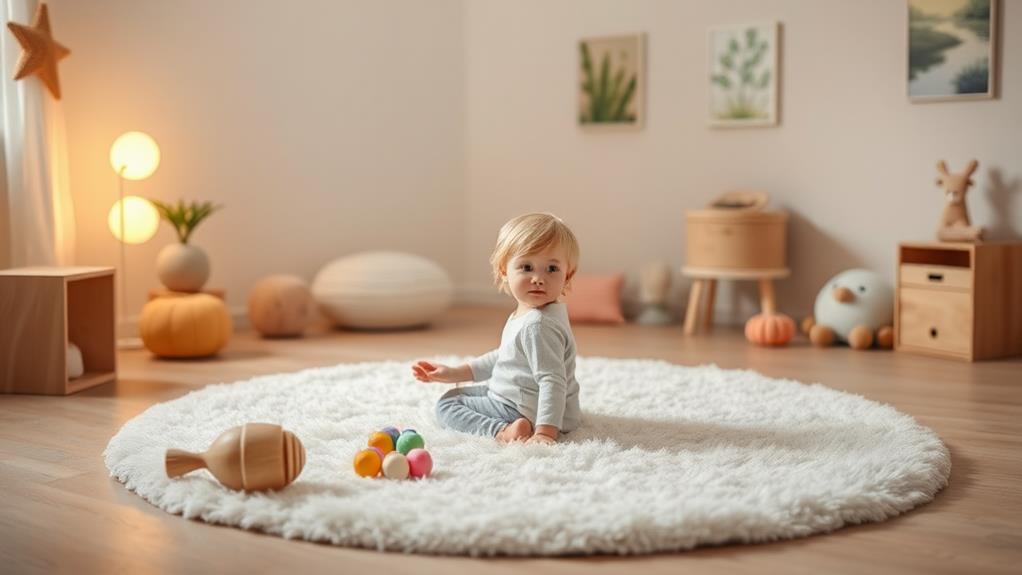
Many parents find it beneficial to teach self-regulation skills to hyperactive children, as these abilities can significantly improve their ability to manage emotions and impulses. Self-regulation involves recognizing feelings and controlling reactions, which is essential for kids who often feel overwhelmed.
Start by helping your child identify their emotions. Use simple charts or pictures to help them express how they feel, whether it's happy, sad, or frustrated.
Next, introduce calming techniques, like deep breathing or counting to ten. Encourage your child to practice these skills in different situations, like before a difficult task or when they feel restless. Role-playing can also be effective; act out scenarios together so they can practice responding calmly.
You might also want to set up a routine that includes regular breaks. This gives your child a chance to regroup and refocus, making it easier for them to manage their impulses later on.
Offer Choices
Offering choices to hyperactive children can be a powerful way to empower them and reduce impulsivity. When you present options, it gives them a sense of control over their decisions, which can be incredibly beneficial. For example, instead of saying, "It's time to clean your room," you might ask, "Would you like to start with the toys or the clothes?" This way, they feel they've a say in the process, making them more likely to cooperate.
Moreover, offering choices can help channel their energy positively. You might say, "Do you want to read a book or do a puzzle?" By providing engaging activities, you keep their minds occupied and reduce restlessness. It's important to keep the choices limited, though—too many options can lead to confusion and frustration.
Additionally, when you encourage them to make decisions, you're teaching valuable skills like problem-solving and critical thinking. You're also helping them learn to manage their impulses in a constructive way.
Encourage Outdoor Play

Getting kids outside can do wonders for hyperactive children. Fresh air and physical activity let them burn off excess energy while enjoying the freedom of open spaces. Encourage your child to explore parks, playgrounds, or even your backyard. When they run, climb, and play, they not only release pent-up energy but also improve their mood and focus.
Set up fun outdoor activities like tag, hide-and-seek, or even simple nature walks. These activities engage their bodies and minds, making them more relaxed and calm afterward. Plus, being in nature has a soothing effect, allowing them to connect with their surroundings and feel grounded.
You can also involve your child in gardening or outdoor chores. This not only keeps them active but also teaches responsibility and patience. Let them dig in the dirt or water the plants, and watch how this simple act can capture their attention and provide them with a sense of accomplishment.
Encouraging outdoor play is a fantastic way to help hyperactive children find balance. So, grab a ball or a frisbee, and head outside for some fun! It's a win-win for both their energy levels and your sanity.
Use Fidget Tools
After outdoor play, fidget tools can be a great way to help hyperactive children maintain focus and calmness indoors. These tools, like stress balls, fidget spinners, or textured strips, give kids something to do with their hands. This can keep their minds engaged while they tackle homework or listen to a lesson.
Using fidget tools allows children to release some of their pent-up energy without disrupting others. When kids squeeze a stress ball or spin a fidget spinner, they often find it easier to concentrate on the task at hand.
It's important to choose tools that suit your child's preferences, as some may prefer tactile objects while others enjoy visual distractions.
You can also set clear guidelines about when and where to use these tools. For instance, designate fidget time during specific activities or when they feel particularly restless. By doing this, you help your child understand when it's appropriate to use them, creating a structured environment that supports their needs.
Ultimately, fidget tools can make a positive difference, fostering a sense of calm and focus so your child can thrive indoors.
Schedule Regular Breaks
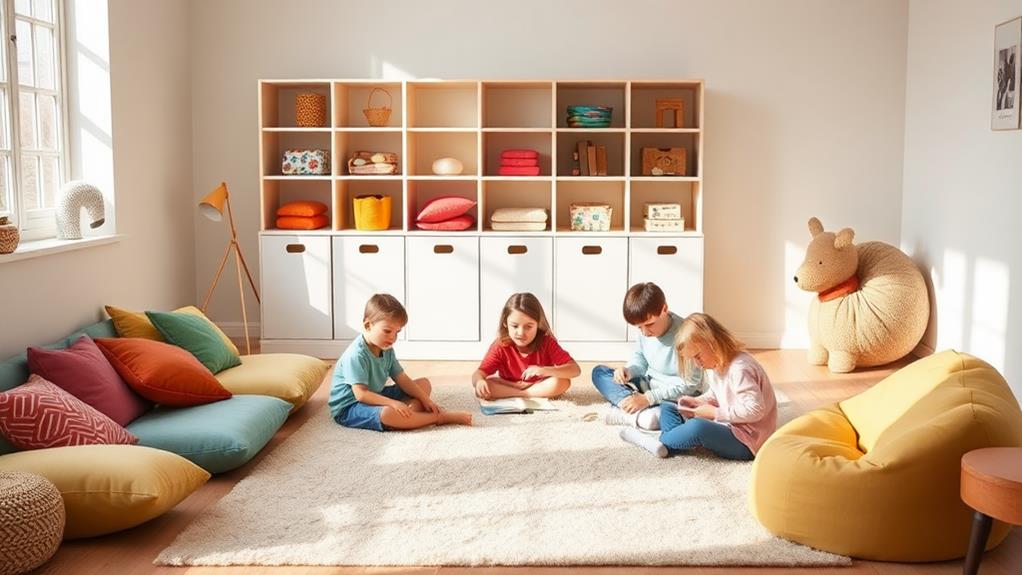
Regular breaks are essential for helping hyperactive children recharge their focus and energy. When you schedule regular breaks throughout the day, you give your child the opportunity to step away from tasks that may feel overwhelming. It's important to create a routine that includes these breaks, so your child knows when to expect them.
During these breaks, encourage your child to engage in physical activities. This could be a quick walk, jumping jacks, or even dancing to their favorite song. Physical movement helps release built-up energy and can lead to improved concentration once they return to their tasks.
Additionally, you might consider incorporating quiet time into the breaks. Activities like reading, drawing, or simply sitting quietly can help calm their minds and prepare them for the next focus session.
Be sure to keep the breaks short—around 5 to 10 minutes works well. This way, your child won't lose track of time or become distracted.
Seek Professional Guidance
Seeking professional guidance can be a crucial step in effectively managing hyperactivity in children. When you notice that your child's energy levels are impacting their daily life, it might be time to consult an expert. Psychologists, pediatricians, and child behavior specialists can provide valuable insights tailored to your child's specific needs.
These professionals often use various assessments to understand the underlying causes of hyperactivity, which can include attention deficit hyperactivity disorder (ADHD) or anxiety. They can help develop a comprehensive plan that includes behavioral strategies, therapy options, and, if necessary, medication.
Don't hesitate to reach out for help. You're not alone in this journey, and seeking assistance shows your commitment to your child's well-being.
Additionally, support groups can connect you with other parents facing similar challenges, providing a sense of community and shared experience.
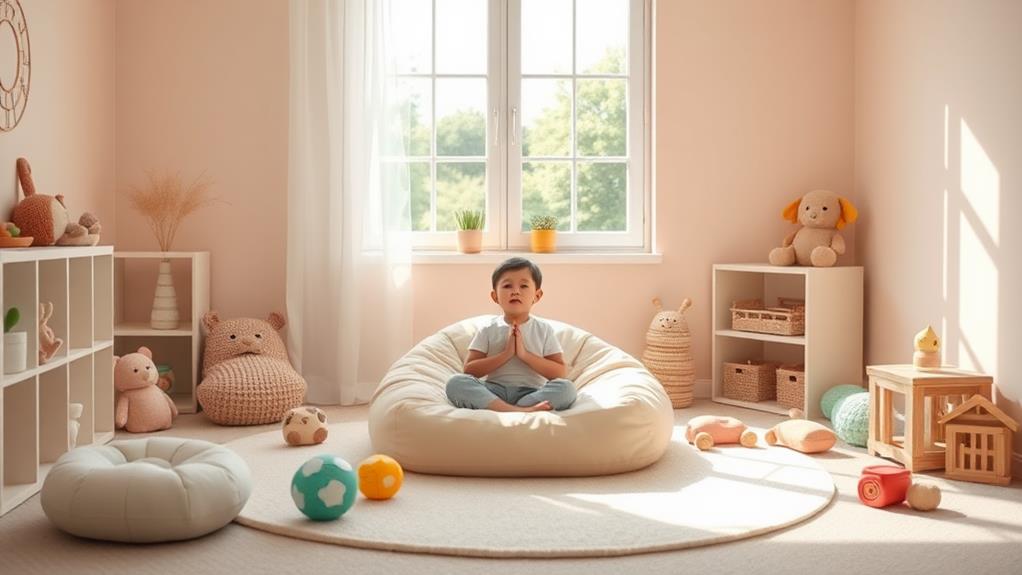
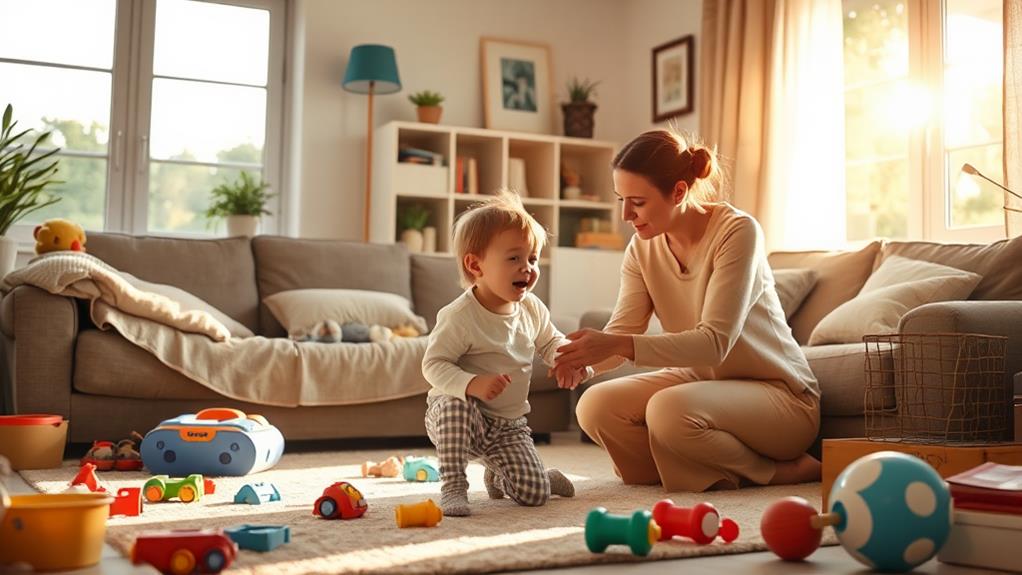

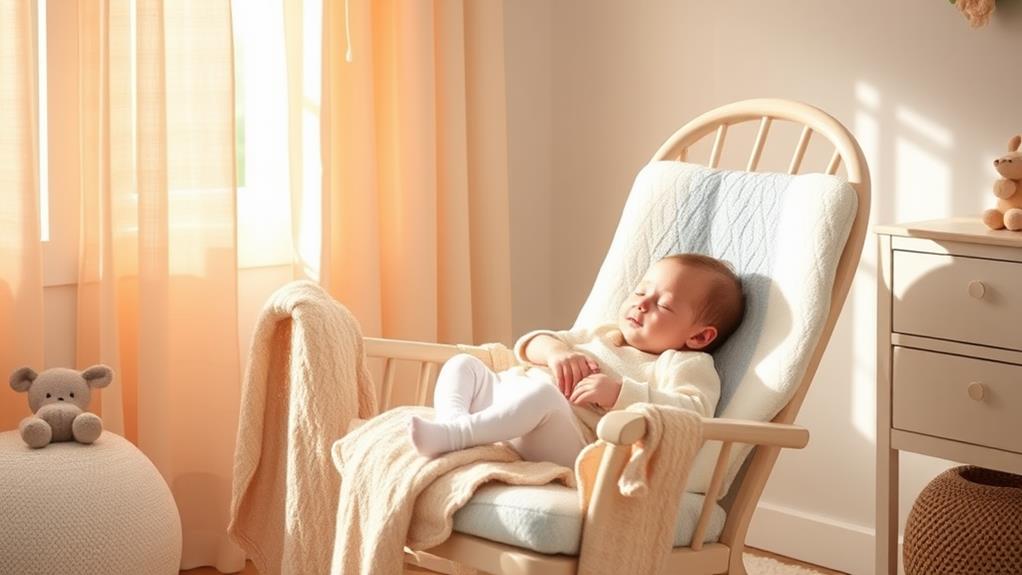










Post Comment